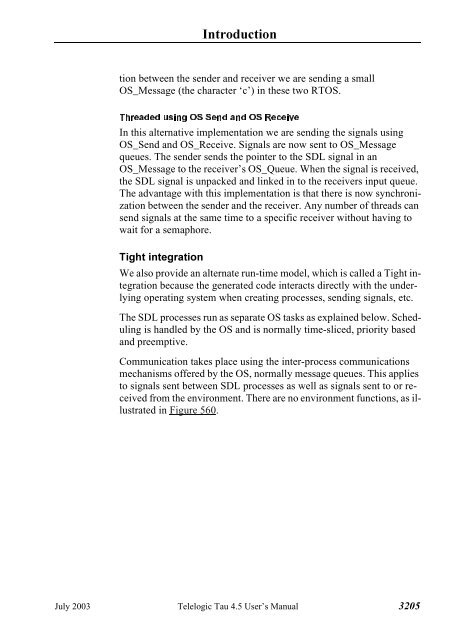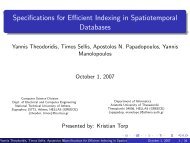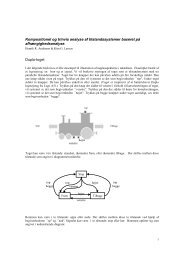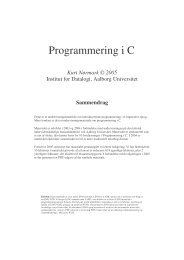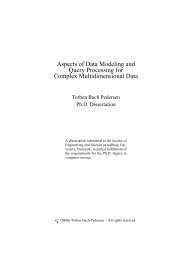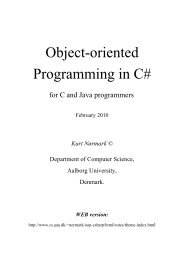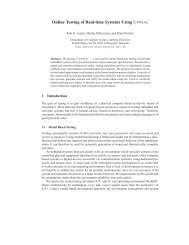,QWHJUDWLRQ ZLWK 2SHUDWLQJ 6\VWHPV
,QWHJUDWLRQ ZLWK 2SHUDWLQJ 6\VWHPV
,QWHJUDWLRQ ZLWK 2SHUDWLQJ 6\VWHPV
You also want an ePaper? Increase the reach of your titles
YUMPU automatically turns print PDFs into web optimized ePapers that Google loves.
,QWURGXFWLRQ<br />
tion between the sender and receiver we are sending a small<br />
OS_Message (the character ‘c’) in these two RTOS.<br />
ÃÃÃÃÃÃ<br />
In this alternative implementation we are sending the signals using<br />
OS_Send and OS_Receive. Signals are now sent to OS_Message<br />
queues. The sender sends the pointer to the SDL signal in an<br />
OS_Message to the receiver’s OS_Queue. When the signal is received,<br />
the SDL signal is unpacked and linked in to the receivers input queue.<br />
The advantage with this implementation is that there is now synchronization<br />
between the sender and the receiver. Any number of threads can<br />
send signals at the same time to a specific receiver without having to<br />
wait for a semaphore.<br />
7LJKW L<strong>QWHJUDWLRQ</strong><br />
We also provide an alternate run-time model, which is called a Tight integration<br />
because the generated code interacts directly with the underlying<br />
operating system when creating processes, sending signals, etc.<br />
The SDL processes run as separate OS tasks as explained below. Scheduling<br />
is handled by the OS and is normally time-sliced, priority based<br />
and preemptive.<br />
Communication takes place using the inter-process communications<br />
mechanisms offered by the OS, normally message queues. This applies<br />
to signals sent between SDL processes as well as signals sent to or received<br />
from the environment. There are no environment functions, as illustrated<br />
in Figure 560.<br />
July 2003 Telelogic Tau 4.5 User’s Manual ,um-st1


